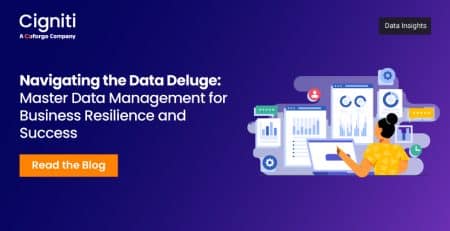4 Key Pillars of Data Governance Framework and Management Strategies
Data governance and management is a term that has become more commonplace in recent years. However, many organizations still struggle to implement effective data governance and management strategies. This lack of focus is becoming more and more apparent as the importance of data management continues to grow.
4 Pillars of Data Governance Framework
Here are the four key pillars of data governance to Manage your Information Assets. A robust data governance framework is the foundation for these four pillars, ensuring data is managed, protected, and utilized efficiently.
1) Data Governance
Data governance ensures that your data is available to the right people at the right time and in a usable format. A well-established data governance framework can help you improve business processes, reduce costs, and ensure compliance with industry standards like GDPR. Businesses can use these data governance pillars and their best practices to leapfrog their efforts in streamlining the flow of information amongst different levels of the business.
Data governance helps you to:
- Ensure that all stakeholders have access to the right information at the right time by creating a centralized repository of relevant data sources
- Improve operational efficiency by automating reporting processes
- Reduce costs by standardizing formats and reducing duplication of effort across departments or teams
2) Master Data Management (MDM)
Master Data Management (MDM) ensures that the right data is available to users at the right time. It’s a process of managing data about your business, including products, customers, suppliers, employees, and other entities that make up your organization.
Master Data Management helps you define attributes for each entity by creating “master” records in a central repository. It also helps you manage relationships between those entities so that when someone requests information about one thing (say, a customer), it will also return all related information (like orders).
3) Data Quality
Data quality is the degree to which data is fit for use. Data quality has four dimensions: accuracy, completeness, relevance, and timeliness.
The impact of poor data quality can be significant – it can lead to financial losses or organizational failure. For example, if customer data isn’t accurate or complete, then your marketing campaigns won’t perform as well as they could have otherwise; if your sales team doesn’t know what products are selling well in which regions, then they may not sell enough units; if there are no processes in place for updating contact details on files regularly, this means that customers won’t get contacted when new products become available, or special offers are made available only via email or SMS, etc.
4) Security and Compliance
Data security is a top priority for organizations across the globe. The General Data Protection Regulation (GDPR) requires companies to protect personal data and privacy in their operations and processes. In addition to this regulation, many more laws and regulations affect your ability to collect and use customer information effectively to provide value-added services or products through your business. For example:
- HIPAA defines how healthcare providers can collect patient information.
- PCI DSS outlines how merchants should protect credit card information when stored on their servers.
- FERPA says universities can’t release student records unless they have written consent from those students themselves or their parents if they are minors.
Effective data governance is critical to the success of any enterprise. These data governance pillars help you ensure that your organization’s data is:
- controlled, managed, and protected.
- valuable when used as efficiently as possible by those who need it most.
- available where and when needed by those who need it most (i.e., available on demand).
Conclusion
Data governance is a critical component of any enterprise. Data is the fuel that powers our digital economy, so it’s important to ensure that your data is secure and compliant with regulations like GDPR or HIPAA. By implementing one or more of these four pillars–data governance, master data management, data quality, and security & compliance–you can ensure that your organization has the right tools in place to manage its information assets effectively and efficiently.”
Cigniti’s Data Governance and Management is a part of the overall Data Engineering & insights services that help you handle these four pillars of Data Governance, Master Data Management, Data Quality, and Security & compliance of your business data effectively and efficiently. Our team of experts handles your enterprise data governance and management using data governance frameworks, master data management tools, updated master data management software, effective data quality tools, and the data security and compliance laws of the land.
Need help? Read more about Cigniti’s Data Engineering & Insights Services to learn how it can accelerate your data governance and management efforts.





Leave a Reply